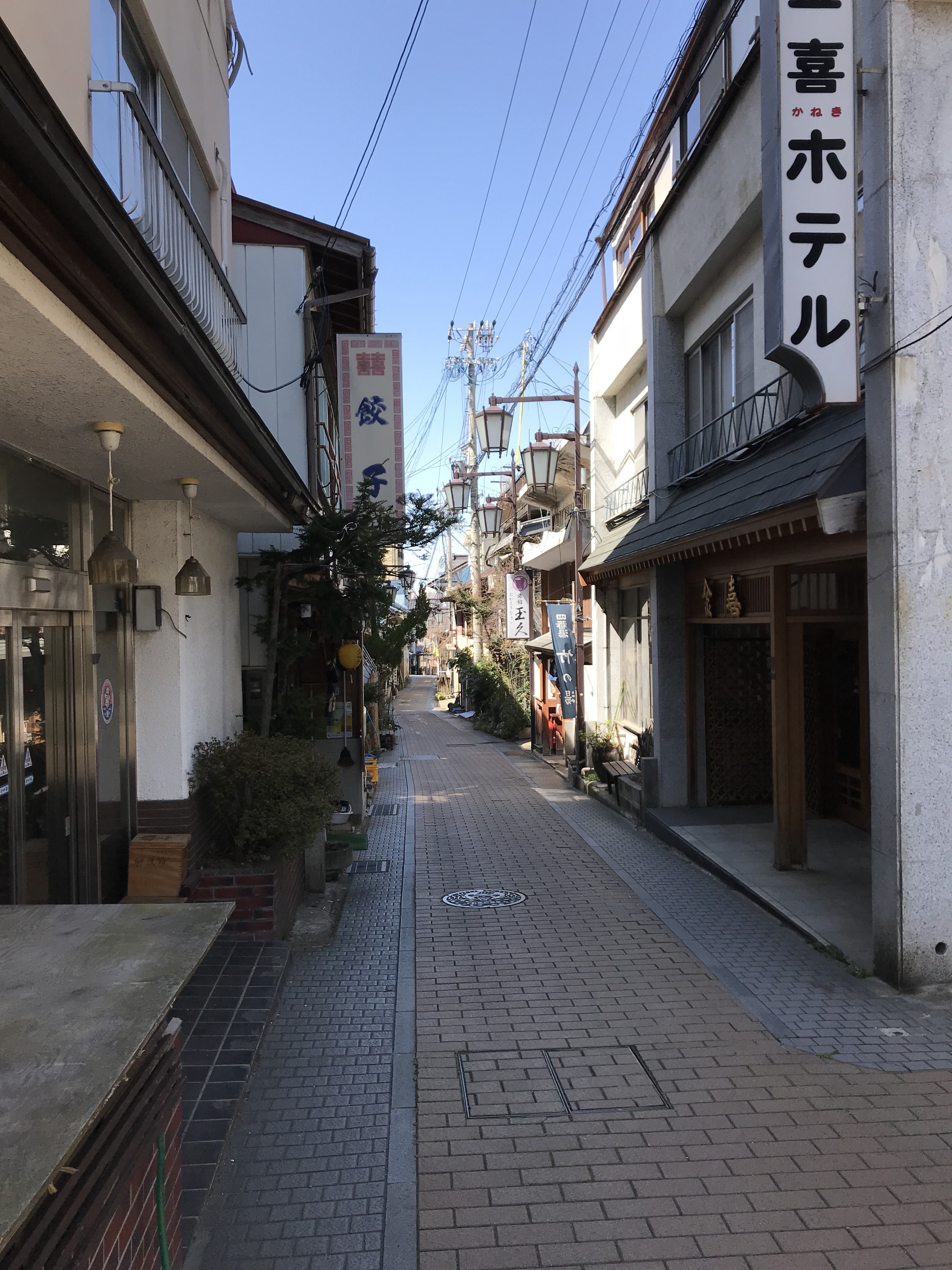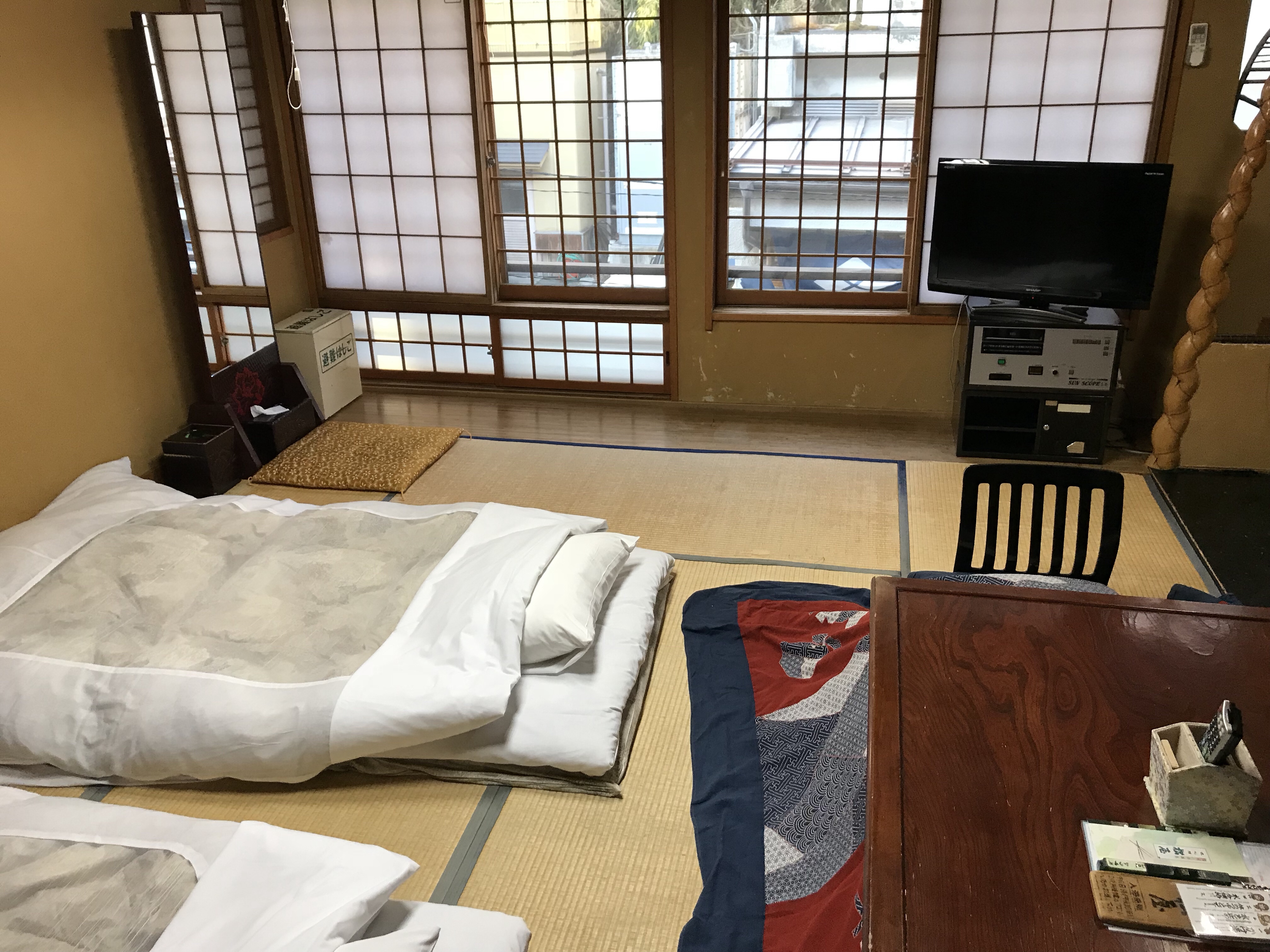Journey to Yudanaka (gateway to snow monkeys)
Today we are beginning the second major leg of our trip up in the mountains.
We grabbed breakfast in the hotel before taking the subway to the Shin-Osaka train station. From Osaka, it is about a 5 hour trip Yudanaka station.
This time we will be traveling by:
- Shinkansen from Osaka to Nagoya
- Limited Express from Nagoya to Nagano
- Limited Express from Nagano to Yudanaka
The lines through Nagano are operated by JR, so it is possible to purchased tickets for the first two segments at our departure point, Shin-Osaka. Do not use the normal JR ticket vending machines, but rather look for machines labeled to sell reserved-seat tickets or Shinkansen tickets.

Note that not all of the machines take cash, and if you are paying by card, you must have a card that can use a PIN rather than signature. (Barclaycard Arrival+ is a card we carry because it is unique amongst US credit cards for being a credit card while also supporting chip+PIN). If you encounter any difficulty with payment, the JR ticket offices can accept all forms of payment. Once switched to English, use of the ticket machines was self-explanatory, including the selection of seats.
For our purchase, the ticket machine gave us each three tickets: one “fare” ticket from Osaka to Nagano, one reserved seat ticket for the Shinkansen to Nagoya, and one reserved ticket to Nagano. To enter the Shinkansen area, stack your “fare” ticket and seat ticket for the Shinkansen and place them together into the turnstile. Through magic it will scan and validate both tickets. If you have any questions about which ticket to insert, the gate staff can help you figure it out.


Changing Trains in Nagoya
When arriving in Nagoya, one again passes the “fare” ticket and Shinkansen seat ticket through the turnstile from the Shinkansen to the regular JR area. The seat ticket is consumed but your fare ticket is returned to you. Here, it didn’t require the seat ticket to Nagano to be put through the machine (though I’m not sure what would have happened if I tried). Again, if confused or the machine unexpectedly rejects it, just ask for help. And if you don’t know how to ask, just hand the staff near the turnstile your tickets and look confused. They’ll sort you out. Just be sure you’re not going through turnstiles to exit the station but rather transferring straight to the JR trains.
It is likely that your transfer time may be tight, so proceed swiftly to your train.

On the train to Nagano, show your fare and seat ticket to the inspector when they pass through the train.

Thoughts on Food
As I sit here on my third hour on a train, well past lunch time, I regret not buying a boxed lunch either at Shin-Osaka or on the Shinkansen. The Limited Express train to Nagano (3 hours) hasn’t had any food for purchase. Be sure to plan ahead for your appetite and don’t rely on the availability of food on the train.
Changing Trains in Nagano
We had about one hour after arriving in Nagano before our next train. We addressed our appetites by visiting one of the bakeries that is so common throughout Japanese train stations. While it felt that we had travelled a long distance from the “big city”, the train station in Nagano had many shopping and dining options available. Our layover went by very quickly.
At Nagano, transfer to the Nagano Dentetsu Line to travel to Yudanaka Station.

The Nagano Dentetsu line isn’t operated by one of the JR companies and has its own ticket kiosk, gates, etc. However, it works the same. Buy a small ticket using the map above the kiosks to determine the correct fare. You’ll most likely want to take the Limited Express train, which has a total fare of 1260 JPY. (There is also a commuter train, which makes many more stops along the route).

There are no automated turnstiles; your ticket will be checked by an attendant.
The train from Nagano to Yudanaka station is about 50 minutes long. Note that once you go through the gate to the platform, there aren’t any facilities such as restrooms or vending machines. The trains show their age a little bit, but remain adorable.

Arriving in Yudanaka
Yudanaka is a very small train station, though there are a number of taxis waiting outside and busses that depart from here. Our Ryokan (transitional Japanese-style hotel) provided free transfer from the train station. Upon arriving in Yudanaka, I called our Ryokan and they arrived in about 15 minutes to pick us up. The hotel is located in Shibu Onsen, about 5 minutes by car. (Onsen meaning hot spring.)

Matsuya Ryokan
Because we booked this trip last minute, we were not able to book three consecutive nights at any one hotel. We spent our first night at Matsuya.
The rooms are in the traditional Japanese style with tatami floors. Our room had a sink, but no toilet or bath. Our room was a larger size and was laid out both with space for sitting and futons for sleeping. Smaller rooms may be configured only for one option at a time (in which case the staff moves the table and lays out the bedding while you eat dinner).

Dinner and breakfast were included in our booking. We had dinner at 6 pm, about 1 hour after we arrived.
The meals are traditional Japanese food: small plates of a variety of things, such as soup, sushi, pieces of smoked fish, pickled vegetables, tempura, and so on.


It was all incredibly delicious and filling. Dinner was served with plum wine.
Onsen
After dinner we went out to enjoy what this location is famous for: the hot springs. The town contains 9 different bath houses that are fed by hot springs. These are used by local residents, but are made available to visitors staying overnight in town. (Only one is available to day visitors.) Each facility is very small. In each, there is a separate section for men and women. After taking your shoes off, there is a small room for undressing (sorry, swimsuits not allowed), storing your belongings on shelves or in baskets, and then another small room containing the onsen.
The onsen itself is just a small, deep, rectangular bath set into the ground. It is lined either with stone or wood. Before stepping into it, you use a provided bucket (and optionally shampoo/soap). The tub itself is meant to remain clean and free of contaminants, and is just used for soaking.
In addition to the 9 shared onsen, each hotel has its own shared bath (again, divided into men/women) which is also fed by the natural hot spring.
The bath in the hotel, while made of the same basic components, had more extensive supplies and space for actually getting yourself clean.
The water feeding the tubs is incredibly hot, so there is a cold water tap that can be used to add cold water to make the temperature more comfortable.